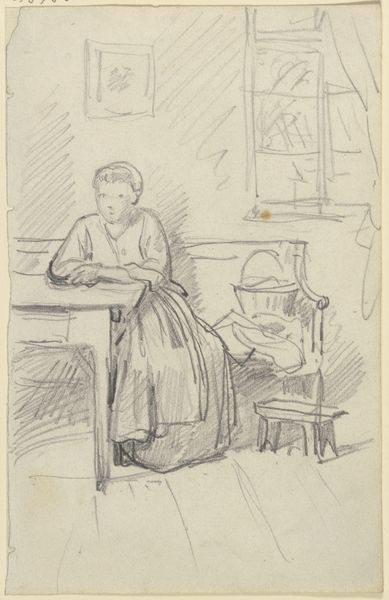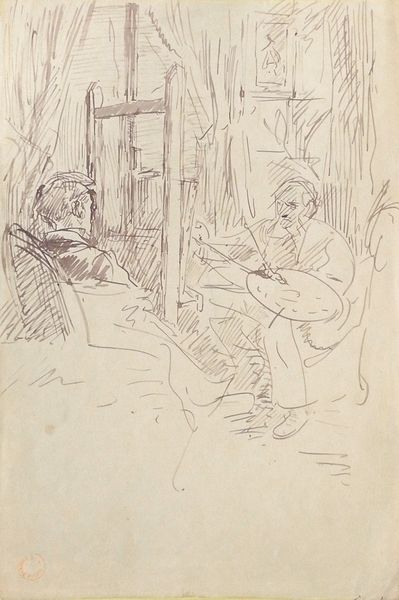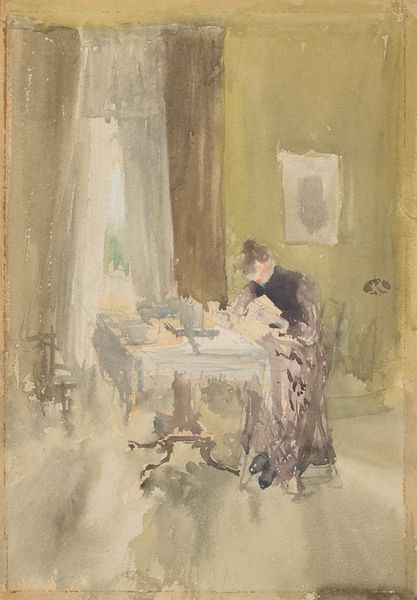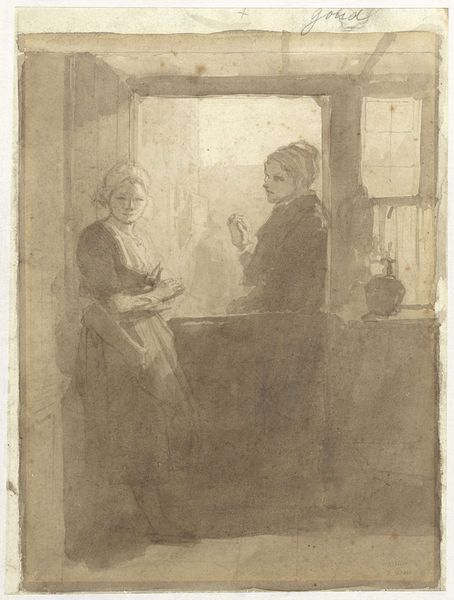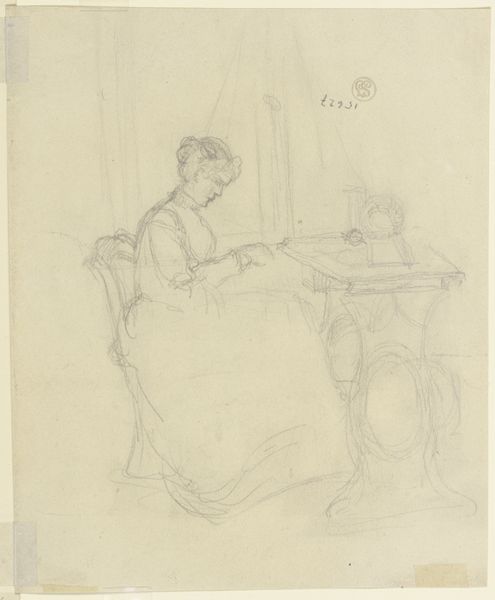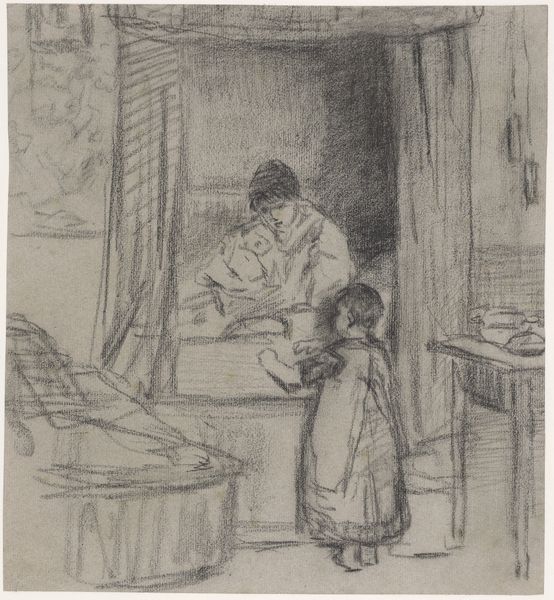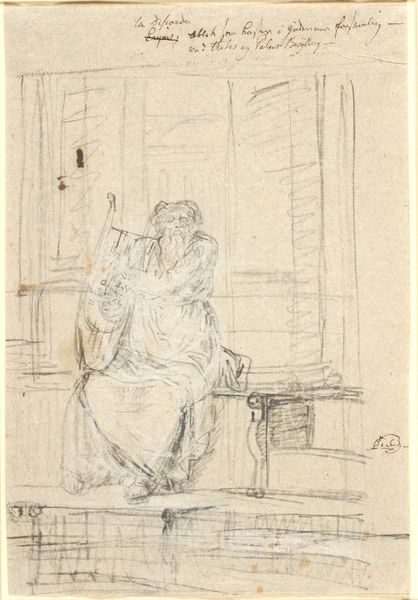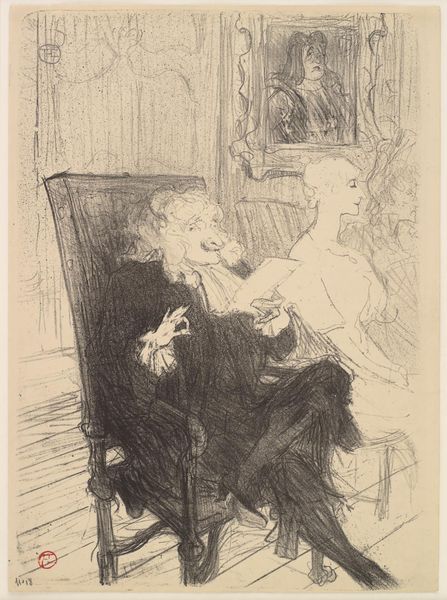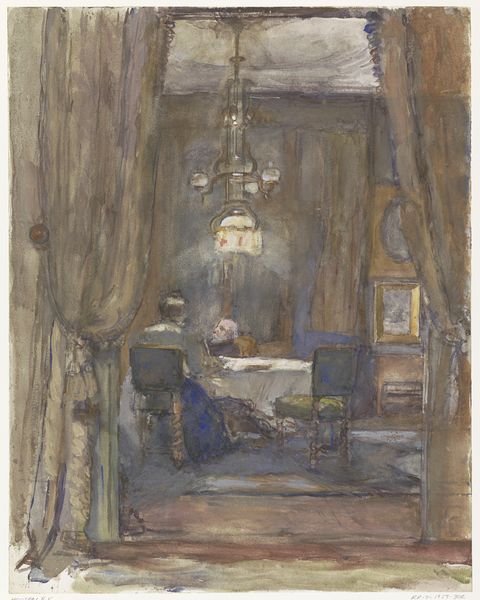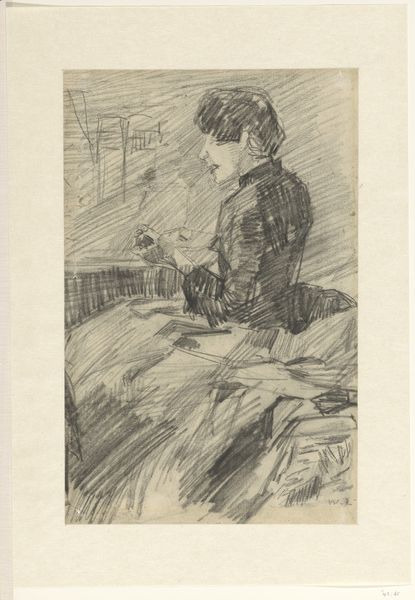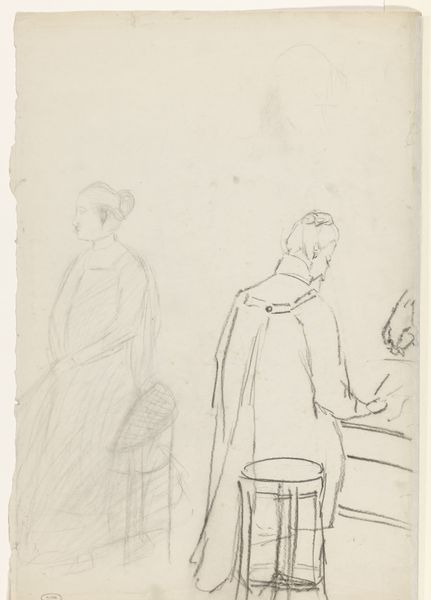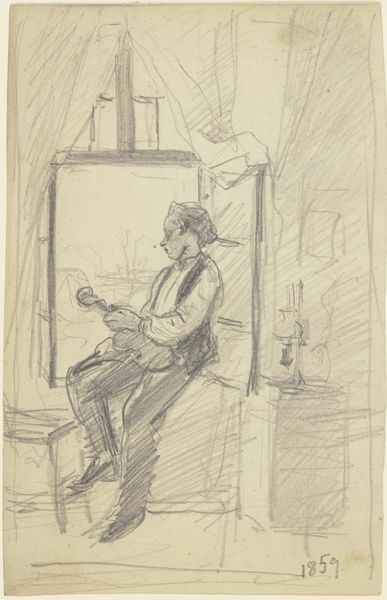
drawing, paper, pencil
#
portrait
#
drawing
#
16_19th-century
#
paper
#
romanticism
#
pencil
#
genre-painting
Copyright: Public Domain
Editor: Here we have Phillip Rumpf’s "Woman Sitting by a Window with a Book", a drawing on paper rendered in pencil. I find the loose sketching style intriguing and somewhat domestic. What can you tell me about it? Curator: Looking at this piece, I'm drawn to consider the very labor involved. The paper, the pencil – humble materials readily available, tools of production democratizing artmaking, aren't they? Think about the societal position of drawing versus, say, oil painting at the time. Editor: I see what you mean! The immediate accessibility of the medium lends itself to more casual depictions of everyday life, as opposed to history paintings with a grandeur style. Curator: Precisely! And consider the 'genre scene' aspect, showing domestic life, a woman reading – this isn't about idealizing nobility but depicting bourgeois consumption, both of goods and, intellectually, through literature. Is the availability of affordable books relevant? Absolutely. The making and consuming are so entwined. What is the function of art production for Rumpf here, if not simply reproduction for the market? Editor: That frames the image so differently than a typical 'romantic' interpretation. So you are arguing for an economic and industrial read on what might seem a simple, private scene? Curator: I'm proposing we look at it not *just* as Romantic yearning but within the broader framework of 19th-century material culture. What the woman can obtain, what the artist uses – the intersection reveals social narratives beyond just her solitary experience. Editor: This focus on the materials, production, and social context definitely provides an interesting layer to consider alongside aesthetic interpretations. I never thought of it that way. Curator: It's about shifting our gaze; how was the sausage made? Let us ask how the artwork was produced as a means to dissect art.
Comments
No comments
Be the first to comment and join the conversation on the ultimate creative platform.
